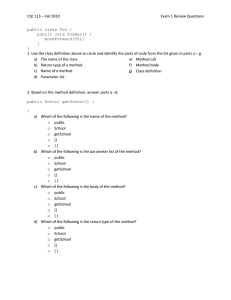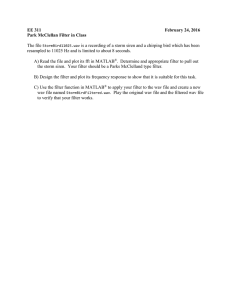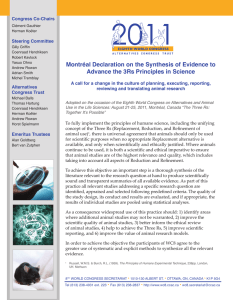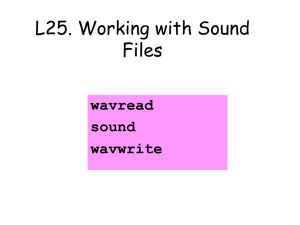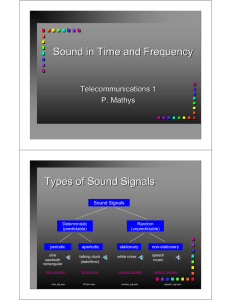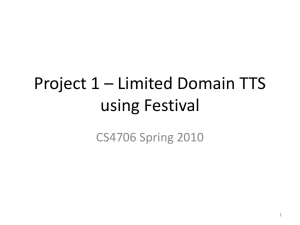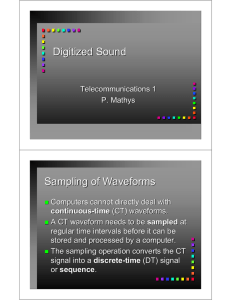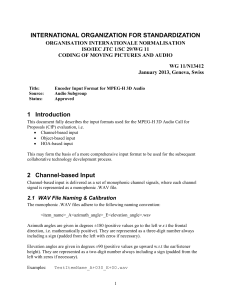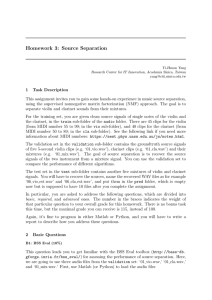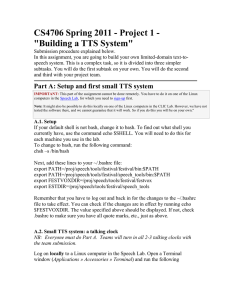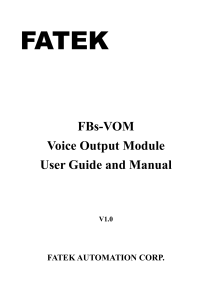From Sound to Music CSC 161: The Art of Programming 11/16/2009
advertisement
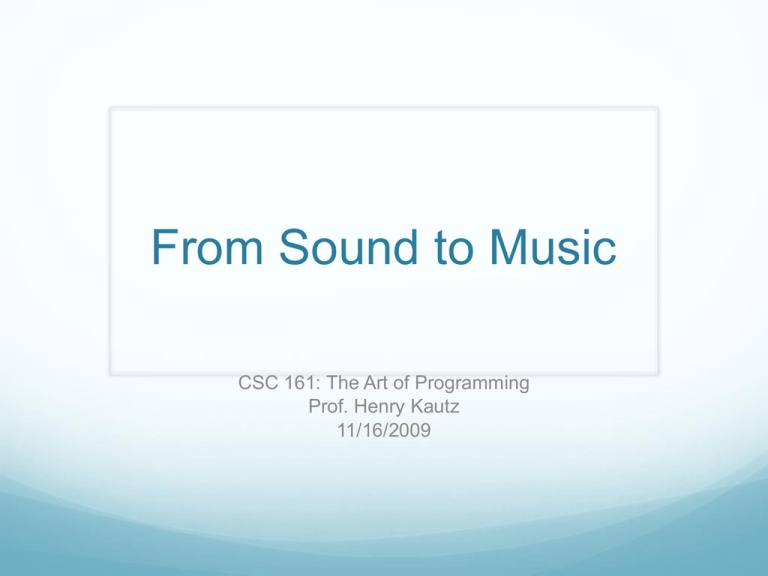
From Sound to Music CSC 161: The Art of Programming Prof. Henry Kautz 11/16/2009 Last Class Working with sound files Example file sound.py import wave import array from math import sin, pi 2 Fast 3 Slow 4 Concepts Sound Frequency Amplitude Sampling Rate WAV file Header Frames Sound data Raw file contents: string of bytes Array: sequence of 16 bit (or other size) numbers 5 Common Ways to Manipulate Sound Waves Speed up Slow down Combine Add echo Reverse ?! 6 Secret Message 7 Programming Assignment Add the following two functions to sound.py: backwards( ) should read the names of input and output WAV files, and create a backwards version of the input file in the output file. Apply backwards( ) to secretMessage.wav combine( ) should read the names of two input WAV files and one output file. The output file should have the length of the shorter of the two input files, and contain the combination of the two input files. Each sample in the output is the sum of the two corresponding samples in the inputs, divided by 2. Use combine( ) to combine declaration.wav and BornToRun.wav 8 Part II (Optional, Extra Credit) Implement the following functions: amplify( ): Scale the amplitude of the samples in a file so that the absolute value of the largest (loudest) samples is 32767. Note that samples may be positive or negative, and that your function will have to scan through all the frames first to discover the largest sample absolute value, in order to determine the scaling factor. soften( ): Cut the maximum amplitude of a file in half. echo( ): Add an echo effect to a file. This is done by merging in a softer version of the file with itself delayed by a half second or so 9 Two Roads to Computer Music 10 Sampling & Mixing The first electronic music sampled, altered, and mixed sounds by physically cutting and manipulating audio tape! Scratching: manipulating sound samples by changing speed / reversing vinyl records 11 Sound Mix Artists Rap often mixes in clips of other songs In classical music, avant garde composers have long been fascinated with found sound John Cage Starting in the 1960’s, popular artists started to explore the possibilities of mixing arbitrary sound Frank Zappa Brian Wilson The Beatles: Revolution 9 Wilco 12 Revolution 9 13 The Other Road: Synthesis 14 Wendy Carlos 15 Synthesizing Sound How can we write a Python program to synthesize sound? Let’s remember the key concepts of digital sound waves 16 Key Concepts frequency: the number of waves per second = pitch amplitude: the height of each wave = loudness sampling rate: the number of samples per second of the wave = quality 17 Formula for Pure Tones S sin(2 f i / r) i sample (frame) number S sample value amplitude (loudness) f frequency (pitch) r sampling rate 18 Synth 19 Part III (Optional, Extra Credit): Music Synthesizer Implement a program that reads in a text file containing musical notation and creates a WAV file of the music. The musical notation: Each note is specified by two characters separated by white space. The first character is a letter specifying the pitch A, B, C, D, E, F, G, or the letter R to indicate a rest The second character is the duration specified a W, H, Q, E (whole, half, quarter, eighth). 20 finally 21 Part IV (Optional, Extra Credit): Music Composition Create an original musical composition using any or all of the functions you implemented You can create your own input WAV files using any programs you like. iTunes to rip samples from CDs Sound Recorder to record from a microphone You might run several different functions multiple times to create your final composition. 22 Movies of the Day 23
